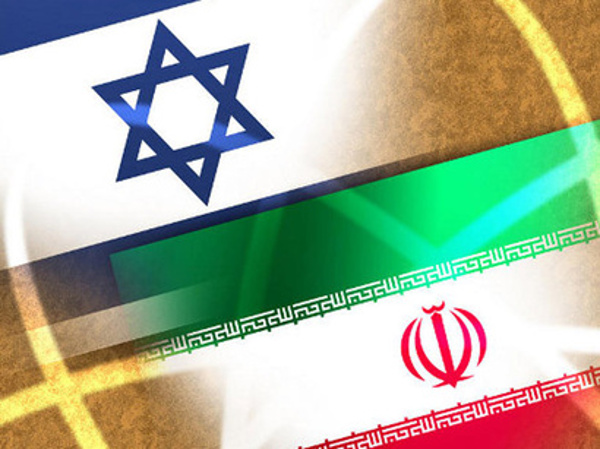by Helena Cobban
Over the past three-plus months it has become increasingly clear that, despite the bombast that Pres. Donald Trump has hurled against the Islamic Republic of Iran (along with a full deck of extremely harmful sanctions and some cyber attacks), neither he nor his closest regional allies in the anti-Iran coalition have been willing to escalate to any military attack against Iran that could escalate to all-out war.
Might the Middle East now be seeing the emergence of a situation of mutual deterrence that could bring it some much-needed stability — and that could also put the long-vaunted “value” of nuclear weapons into deep question?
Let’s do a quick recap. On June 20, Iranian forces shot down a large U.S. Reaper Hawk drone that had almost certainly ventured into Iranian airspace. The military reaction from the United States, Saudi Arabia, Israel, and the United Arab Emirates? As I noted here a few weeks later: goose egg. Then on September 14, either Iranian allies or Iran itself launched a large-scale, stunningly intricate attack against Saudi Arabia’s oil complex at Abqaiq. More goose egg.
Along the way, in late August, Israel killed two fighters affiliated with Iran’s Lebanese ally, Hizbullah, in Syria and sent explosive drones against two Hizbullah-related targets inside Lebanon. The Hizbullah chief warned publicly that the organization would retaliate against Israel. Israel’s response? Its military leaders organized a very public withdrawal of their forces from a strip along the country’s northern border with Lebanon. Then, after Hizbullah indeed launched a quick missile strike against an Israeli military vehicle fleeing deeper into Israel, the Israelis’ only response was to shoot a few pieces of ordnance, seemingly at random, into uninhabited parts of southern Lebanon.
In an analysis of the incident and its background that I published September 5, I noted that, “the situation of reciprocal (if highly asymmetrical) deterrence that has existed between Israel and Hizbullah since … 2006 remains in place.”
Now, in the aftermath of the Abqaiq attacks, it is clearer than ever that a situation of mutual (if asymmetrical) deterrence exists not just between Israel and Hizbullah over the Lebanon-Israel border, but also more broadly in the region between Israel and Hizbullah’s backers in Iran.
In Israel, nuclear scientist Uzi Even recently assessed the capabilities the Iranians or their allies revealed during the Abqaiq attack:
The Iranian technology is reliable and advanced, and the Iranians are capable of producing and operating simultaneously a large number of drones and cruise missiles.
He argued that,
Either the Saudi defense system failed or communication between the Iranian missiles was hidden and hard to discover. Either way, the attack was successful and effective…
The Iranians, or their proxies, showed that they can hit specific targets with great precision and from a distance of hundreds of kilometers. We have to accept the fact that we are now vulnerable to such a strike. Yes, we can also carry out such strikes and perhaps inflict great damage on them, but so what? Does rational deterrence always work in the Middle East?
He also argued that,
above all… operation of [Israel’s] Dimona nuclear reactor should be halted. It has now been shown to be vulnerable, and the harm it could cause would likely exceed its benefits.
For the staunchly pro-war and pro-Israel New York Times columnist Thomas Friedman, the main takeaway from Even’s analysis was that:
Israel has been signaling two things to Hezbollah and Iran. One is that in response to any missile attacks, Israel will carpet bomb neighborhoods in Lebanon where Hezbollah’s families live and where it manufactures the missiles, and turn them into rubble, as it did on a small scale in 2006. And it will make the Lebanese economy collateral damage.
And the other is that Israel will attack Tehran directly, either with precision long-range missiles from Israel or submarine-launched missiles from the Persian Gulf, with this message: “Every time Tel Aviv is hit by your proxies, we will hit Tehran. You will not sit out this war. And you will not out-crazy us.”
Notably, neither of these “signals” seemed to be ones that Friedman disagreed with, or had any problem with. But his analysis of the crucial war that Hizbullah and Israel fought in 2006 also seemed badly askew: the bombing that Israel carried out that year of the “neighborhoods in Lebanon where Hizbullah’s families live” — and indeed, of numerous key elements of the country’s vital national infrastructure — was extremely far from “small-scale.” It was truly monumental. Yet Hizbullah not only survived it, it survived it with its standing in Lebanon’s political system significantly enhanced and with the Israeli ground units that had attempted a broad invasion of the country racing back as fast as they could to Israel with their tails between their legs.
Hizbullah’s performance in 2006 reaffirmed to all objective observers that a situation of reciprocal (if asymmetrical) deterrence existed between it and Israel — and it achieved that by having only relatively “dumb” weapons at its command. Friedman was right to warn that with the much smarter surveillance and guidance systems now presumably at its command, Hizbullah’s ability to project targeted threats against vital Israeli infrastructure is almost certainly much, much higher.
Friedman’s conclusion was that the demonstrations that Iran and its allies (whether in Lebanon, Yemen, or elsewhere) have given in the past few months of the high level of their targeting and command-and-control capabilities have made the Middle East a considerably more dangerous place:
[T]he Middle East may look calm right now, but that’s an illusion. Everyone is recalculating: The Iranians are emboldened, the Arabs are frightened and Israel and Iran are one miscalculation away from a war of precision missiles that neither can afford.
I question this conclusion, which seems unthinkingly Israelocentric. After all, for 40 years of the US-Soviet Cold War, the situation of reciprocal deterrence and “Mutually Assured Destruction” (MAD) between the world’s two largest, nuclear-armed superpowers gave a measure of strategic calm to a world still reeling from the two globe-girdling wars of the first half of the 20th century. (True, there were lots of nations in the Global South that suffered in that era.)
But why would we think that in the Middle East of the second quintile of the 21st century, a situation of Mutual Intraregional Deterrence (MID) would be any more destabilizing than the Cold War’s MAD was at the global level?
Indeed, the actual situation of being deterred that Israel, Saudi Arabia, the United States, and the UAE have all evinced in recent months — at the hands of the non-nuclear-weapons state Iran and its allies in the region — is the most intriguing aspect of the current situation. Bearing in mind that two of those powers, Israel and the United States are both well-endowed nuclear powers, what does this tell us about the utility of nuclear weapons in today’s world? A subject for another day…
Initially published at Medium and republished here with author’s permission.






Helena Cobban
Friedman is a journalist and not a strategist.
And he is wrong about Israeli submarines in the Persian Gulf, they would have been sunk by Iran.
The rest of your article is accurate, Hizbullah can destroy Israel and Iran can destroy Persian Gulf Arabs.
There is one caveat, Israel can destroy Hizbullah as Hizbullah is destroying Israel, but Israel cannot destroy Iran.
Americans and Europeans, over the last 25 years, made this possible, by never letting an opportunity to advance Israel’s interests go to waste, all the while treating Arabs and Iranians shabbily.
Another author, who ends up giving the benefit of the doubt, to the inhumane Ayatollahs, who commit human rights violations every day in Iran, whilst she is critical of US foreign policy.
Criticize both next time please.
A very well written article. The problem with nuclear weapons is that the nuclear fallout particularly in the case Israel can do massive damage outside Iran to neighbouring countries including Israel itself. As hinted at in the article Israel’s nuclear reactor is vulnerable to missile attack and an exploding nuclear reactor would have similar radioactive fallout to a nuclear bomb. Sheldon Addelson speaking in Tel Aviv in 2013 advacated dropping nuclear bombs on Iran, not understanding that the distruction of Israel’s own nuclear reactor would make Chernobyl look like a walk in the park. Let’s all hope that common sense and human decency prevail.
Helena Cobban,
Generally speaking you do write very good articles. But this time? Quoting someone like Thomas Friedman who’s been a cheerleader for Israel and GWB since 2001 is very surprising. Thomas Friedman has been and still is like a clutch for Freed Zakaria, GPS Show, on which both of them were cheering GWB to invade Iraq in 2002. Today Freed has evolved and is trying to free himself up from his past and stupid positions but Thomas has remained the same with no credibility!